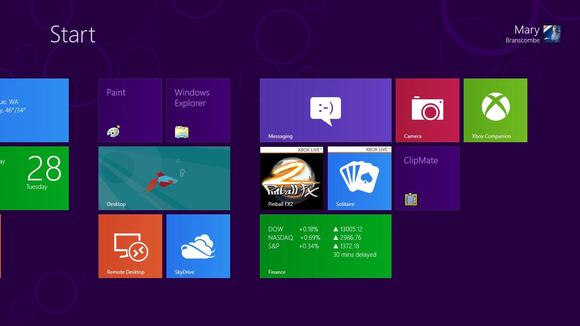
Windows 8 is coming this Friday! It’s a huge change from the Windows we’re all used to, so here’s some tips to get you started…
Out goes the Start menu, in comes the new touch-oriented Metro Start screen, new apps, new interface conventions – even experienced PC users may be left feeling a little lost.
1. Lock screen
Windows 8 opens on its lock screen, which looks pretty but unfortunately displays no clues about what to do next.
It’s all very straightforward, though. Just tap the space bar, spin the mouse wheel or swipe upwards on a touch screen to reveal a regular login screen with the user name you created during installation. Enter your password to begin.
2. Basic navigation
Windows 8 launches with its new Metro interface, all colourful tiles and touch-friendly apps. And if you’re using a tablet then it’ll all be very straightforward: just swipe left or right to scroll the screen, and tap any tile of interest.
On a regular desktop, though, you might alternatively spin the mouse wheel to scroll backwards and forwards.
And you can also use the keyboard. Press the Home or End keys to jump from one end of your Start screen to the other, for instance, then use the cursor keys to select a particular tile, tapping Enter to select it. Press the Windows key to return to the Metro screen; right-click (or swipe down on) apps you don’t need and select Unpin to remove them; and drag and drop the other tiles around to organise them as you like.
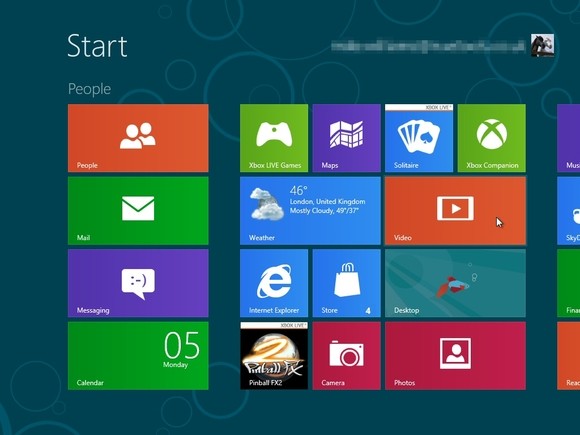
3. App groups
The Start screen apps are initially displayed in a fairly random order, but if you’d prefer a more organised life then it’s easy to sort them into custom groups.
You might drag People, Mail, Messaging and Calendar over to the left-hand side, for instance, to form a separate “People” group. Click the magnifying glass icon in the bottom right corner of the screen to carry out a “semantic zoom”, and you’ll now find you can drag and drop the new group (or any of the others) around as a block.
Right-click within the block (while still in the semantic zoom view) and you’ll also be able to give the group a name, which – if you go on to add another 20 or 30 apps to your Start screen – will make it much easier to find the tools you need.
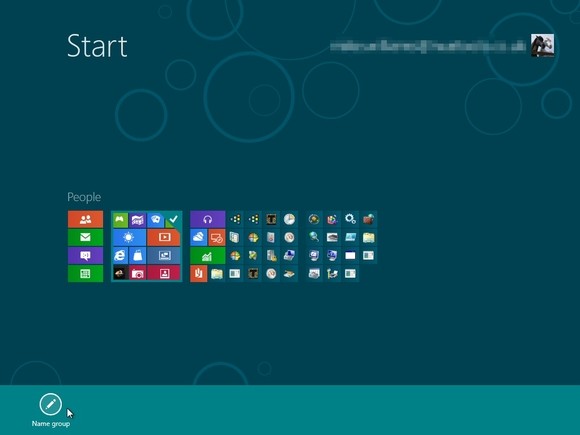
4. Simplified Start menu?
The Windows 8 Developer Preview had a very basic Start menu which you could access by swiping from the right side of a touch screen, or moving the mouse cursor to the bottom left corner of the screen. This has changed a little in the Consumer Preview: now you need to right-click in the bottom left corner (or hold down the Windows key and press X) for a text-based menu which provides easy access to lots of useful applets and features: Device Manager, Control Panel, Explorer, the Search dialog and more.

5. Find your applications
The Win+X menu is useful, but no substitute for the old Start menu as it doesn’t provide access to your applications. To find this, hold down the Windows key and press Q (or right-click an empty part of the Start screen and select All Apps) to reveal a scrolling list of all your installed applications. Browse the various tiles to find what you need and click the relevant app to launch it.
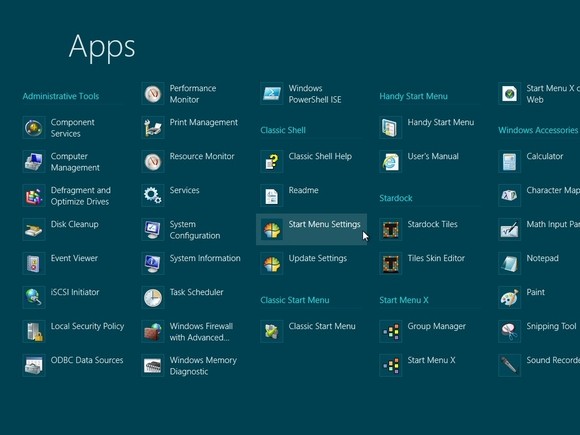
6. Easy access
If there’s an application you use all the time then you don’t have to access it via the search system, of course. Pin it to the Start screen and it’ll be available at a click.
Start by typing part of the name of your application. Windows 8 Consumer Preview makes it more difficult to access Control Panel, for instance, so type Control.
Right-click the “Control Panel” tile on the Apps Search screen, and click “Pin to Start”.
Now press the Windows key, scroll to the right and you’ll see the Control Panel tile at the far end. Drag and drop this over to the left somewhere if you’d like it more easily accessible, then click the tile to open the desktop along with the Control Panel window, and press the Windows key to return you to the Start screen when you’ve done.
7. Shutting down
You’ve finished your first Windows 8 session, and would like to close your system down – but with no Start menu it’s not exactly obvious how this can be done.
It’s easy enough when you know the secret, though. Just move the mouse cursor to the bottom right corner of the screen, click the Settings icon – or just hold down the Windows key and press I – and you’ll see a power button. Click this and choose “Shut down” or “Restart”.
Some of the tricks available in previous versions of Windows still apply. Press Ctrl+Alt+Del, for instance, click the power button in the bottom right-hand corner and you’ll be presented with the same “Shut down” and “Restart” options.
And if you’re on the desktop, press Alt+F4 and you’ll be able to choose Shut Down, Restart, Sign Out or Switch User options.
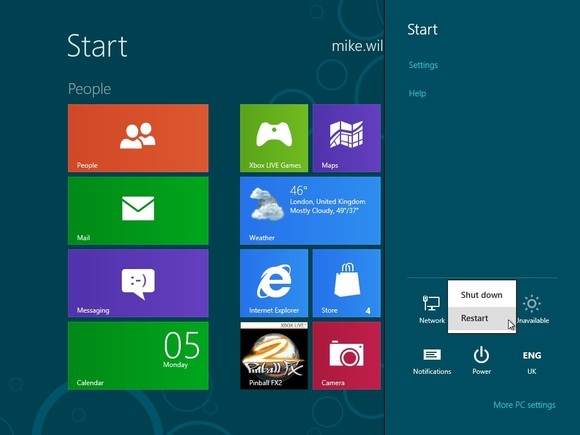
8. App bar
Metro apps aim to be simpler than old-style Windows applets, which means it’s goodbye to menus, complex toolbars, and many interface standards. There will be usually be a few options available on the App bar, though, so if you’re unsure what to do then right-click an empty part of the screen or press Windows+Z to take a closer look.
9. What’s running?
If you launch a Metro app, play with it for a while, then press the Windows key you’ll switch back to the Start screen. Your app will remaining running, but as there’s no taskbar then you might be wondering how you’d ever find that out.
You could just press Alt+Tab, which shows you what’s running just as it always have.
Holding down the Windows key and pressing Tab displays a pane on the left-hand side of the screen with your running apps. (To see this with the mouse, move your cursor to the top left corner of the screen, wait until the thumbnail of one app appears, then drag down.)
And of course you can always press Ctrl+Shift+Esc to see all your running apps in the Task Manager, if you don’t mind (or actually need) the extra technical detail.

10. Closing an app
Metro apps don’t have close buttons, but this isn’t the issue you might think. Apps are suspended when you switch to something else so they’re only a very minimal drain on your system, and if you need the system resources then they’ll automatically be shut down. (Their context will be saved, of course, so on relaunching they’ll carry on where you left off.)
If you want to close down an app anyway, though, move the mouse cursor up to the top of the screen. When it turns from the regular mouse pointer to the icon of a hand, hold down the left mouse button and drag it down the screen. Your app should shrink to a thumbnail which you can drag off the screen to close it.
If that’s too much hassle then simply pressing Alt+F4 still works.
And when all else fails then press Ctrl+Shift+Esc to launch Task Manager, right-click something in the Apps list and select End Task. Beware, though, close something you shouldn’t and it’s easy to crash or lock up your PC.


